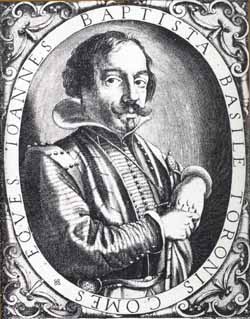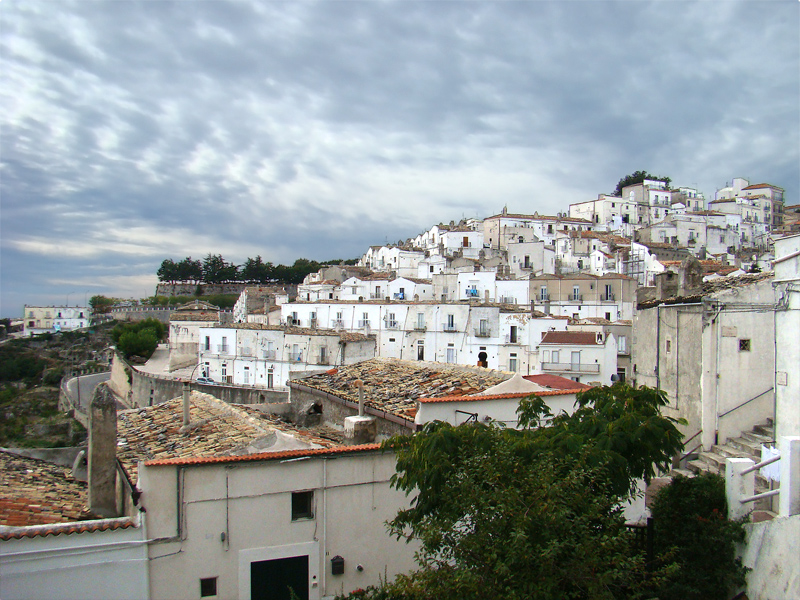|
Zapponeta
Zapponeta ( Pugliese: ) is a town and ''comune'' in the province of Foggia in the Apulia region of southeast Italy. Until 1975 it was a ''frazione'' of Manfredonia Manfredonia is a town and commune of Apulia, Italy, in the province of Foggia, from which it is northeast by rail. Manfredonia is situated on the coast, facing east, to the south of Monte Gargano, and gives its name to the gulf to the east of .... It was founded in 1768 by baron Michele Zezza. References Cities and towns in Apulia Populated places established in 1768 1768 establishments in Italy {{Puglia-geo-stub ... [...More Info...] [...Related Items...] OR: [Wikipedia] [Google] [Baidu] |
Manfredonia
Manfredonia is a town and commune of Apulia, Italy, in the province of Foggia, from which it is northeast by rail. Manfredonia is situated on the coast, facing east, to the south of Monte Gargano, and gives its name to the gulf to the east of it. its population was 56,932. 2011 History  The area of current Manfredonia was settled in ancient times by the
The area of current Manfredonia was settled in ancient times by the
|
Apulia
it, Pugliese , population_note = , population_blank1_title = , population_blank1 = , demographics_type1 = , demographics1_footnotes = , demographics1_title1 = , demographics1_info1 = , demographics1_title2 = , demographics1_info2 = , demographics1_title3 = , demographics1_info3 = , timezone1 = CET , utc_offset1 = +01:00 , timezone1_DST = CEST , utc_offset1_DST = +02:00 , postal_code_type = , postal_code = , area_code_type = ISO 3166 code , area_code = IT-75 , blank_name_sec1 = GDP (nominal) , blank_info_sec1 = €76.6 billion (2018) , blank1_name_sec1 = GDP per capita , blank1_info_sec1 = €19,000 (2018) , blank2_name_sec1 = HDI (2018) , blank2_info_sec1 = 0.845 · 18th of 21 , blank_name_sec2 = NUTS Region , blank_info_sec2 = ... [...More Info...] [...Related Items...] OR: [Wikipedia] [Google] [Baidu] |
Province Of Foggia
The Province of Foggia ( it, Provincia di Foggia ; Foggiano: ) is a province in the Apulia (Puglia) region of southern Italy. This province is also known as Daunia, after the Daunians, an Iapygian pre-Roman tribe living in Tavoliere plain, and as Capitanata, derived from ''Catapanata'', since the area was governed by a catepan as part of the Catepanate of Italy during the High Middle Ages. Its capital is the city of Foggia. Geography The province of Foggia can be divided in three parts: one centered on its capital called '' Tavoliere'', another along the Apennines named ''Daunian Mountains'' and the third on the spur of the boot-shaped Italian peninsula called '' Gargano''. The ''Tavoliere'' is an important agricultural area: grapefruit, olives, durum wheat and tomato are the chief products. It is called "the granary of Italy" because of its significant wheat production. ''Daunian Mountains'' lie along the border with Molise and Campania. Scattered with small villages, ... [...More Info...] [...Related Items...] OR: [Wikipedia] [Google] [Baidu] |
National Institute Of Statistics (Italy)
The Italian National Institute of Statistics ( it, Istituto nazionale di statistica; Istat) is the main producer of official statistics in Italy. Its activities include the census of population, economic censuses and a number of social, economic and environmental surveys and analyses. Istat is by far the largest producer of statistical information in Italy, and is an active member of the European Statistical System, coordinated by Eurostat. History The Italian National Institute of Statistics (IT ISTAT) was founded in compliance with Law Decree no. 1162 of 9 July 1926 as the Central Institute of Statistics (IT Istituto Centrale di Statistica) in order to replace the General Statistics Division of the Ministry for Agriculture (now known as Ministero delle politiche agricole alimentari, forestali e del turismo). The direction of the institution, which was subordinated to the head of state, was given to Corrado Gini. The ISTAT institute, with a staff of about 170 workers, was supp ... [...More Info...] [...Related Items...] OR: [Wikipedia] [Google] [Baidu] |
Neapolitan Language
, altname = , states = Italy , region = Abruzzo, Apulia, Basilicata, Calabria, Campania, Lazio, Marche, Molise , ethnicity = ''Mezzogiorno'' Ethnic Italians , speakers = 5.7 million , date = 2002 , ref = e18 , familycolor = Indo-European , fam2 = Italic , fam3 = Romance , fam4 = Italo-Dalmatian , iso2 = nap , iso3 = nap , glotto = neap1235 , glottorefname = Continental Southern Italian , glottoname = Continental Southern Italian , glotto2 = sout3126 , glottorefname2 = South Lucanian , glottoname2 = South Lucanian = (Vd) Lausberg , map = Neapolitan_languages-it.svg , mapcaption = Intermediate Neapolitan dialects , map2 = Romance_languages.png , mapcaption2 = Neapolitan as part of the European Romance languages Neapolitan (autonym: ; it, napoletano) i ... [...More Info...] [...Related Items...] OR: [Wikipedia] [Google] [Baidu] |
Comune
The (; plural: ) is a local administrative division of Italy, roughly equivalent to a township or municipality. It is the third-level administrative division of Italy, after regions ('' regioni'') and provinces (''province''). The can also have the title of ('city'). Formed ''praeter legem'' according to the principles consolidated in medieval municipalities, the is provided for by art. 114 of the Constitution of Italy. It can be divided into ''frazioni'', which in turn may have limited power due to special elective assemblies. In the autonomous region of the Aosta Valley, a ''comune'' is officially called a ''commune'' in French. Overview The provides essential public services: registry of births and deaths, registry of deeds, and maintenance of local roads and public works. Many have a '' Polizia Comunale'' (communal police), which is responsible for public order duties. The also deal with the definition and compliance with the (general regulator plan), a document ... [...More Info...] [...Related Items...] OR: [Wikipedia] [Google] [Baidu] |
Province Of Foggia
The Province of Foggia ( it, Provincia di Foggia ; Foggiano: ) is a province in the Apulia (Puglia) region of southern Italy. This province is also known as Daunia, after the Daunians, an Iapygian pre-Roman tribe living in Tavoliere plain, and as Capitanata, derived from ''Catapanata'', since the area was governed by a catepan as part of the Catepanate of Italy during the High Middle Ages. Its capital is the city of Foggia. Geography The province of Foggia can be divided in three parts: one centered on its capital called '' Tavoliere'', another along the Apennines named ''Daunian Mountains'' and the third on the spur of the boot-shaped Italian peninsula called '' Gargano''. The ''Tavoliere'' is an important agricultural area: grapefruit, olives, durum wheat and tomato are the chief products. It is called "the granary of Italy" because of its significant wheat production. ''Daunian Mountains'' lie along the border with Molise and Campania. Scattered with small villages, ... [...More Info...] [...Related Items...] OR: [Wikipedia] [Google] [Baidu] |
Italy
Italy ( it, Italia ), officially the Italian Republic, ) or the Republic of Italy, is a country in Southern Europe. It is located in the middle of the Mediterranean Sea, and its territory largely coincides with the homonymous geographical region. Italy is also considered part of Western Europe, and shares land borders with France, Switzerland, Austria, Slovenia and the enclaved microstates of Vatican City and San Marino. It has a territorial exclave in Switzerland, Campione. Italy covers an area of , with a population of over 60 million. It is the third-most populous member state of the European Union, the sixth-most populous country in Europe, and the tenth-largest country in the continent by land area. Italy's capital and largest city is Rome. Italy was the native place of many civilizations such as the Italic peoples and the Etruscans, while due to its central geographic location in Southern Europe and the Mediterranean, the country has also historically been home ... [...More Info...] [...Related Items...] OR: [Wikipedia] [Google] [Baidu] |
Frazione
A ''frazione'' (plural: ) is a type of subdivision of a ''comune'' (municipality) in Italy, often a small village or hamlet outside the main town. Most ''frazioni'' were created during the Fascist era (1922–1943) as a way to consolidate territorial subdivisions in the country. In the autonomous region of the Aosta Valley, a ''frazione'' is officially called an ''hameau'' in French. Description Typically the term ''frazioni'' applies to the villages surrounding the main town (''capoluogo'') of a ''comune''. Subdivision of a ''comune'' is optional; some ''comuni'' have no ''frazioni'', but others have several dozen. The ''comune'' usually has the same name of the ''capoluogo'', but not always, in which case it is called a ''comune sparso''. In practice, most ''frazioni'' are small villages or hamlets, occasionally just a clump of houses. Not every hamlet is classified as a ''frazione''; those that are not are often referred to as ''località'', for example, in the telephone boo ... [...More Info...] [...Related Items...] OR: [Wikipedia] [Google] [Baidu] |
Cities And Towns In Apulia
A city is a human settlement of notable size.Goodall, B. (1987) ''The Penguin Dictionary of Human Geography''. London: Penguin.Kuper, A. and Kuper, J., eds (1996) ''The Social Science Encyclopedia''. 2nd edition. London: Routledge. It can be defined as a permanent and densely settled place with administratively defined boundaries whose members work primarily on non-agricultural tasks. Cities generally have extensive systems for housing, transportation, sanitation, utilities, land use, production of goods, and communication. Their density facilitates interaction between people, government organisations and businesses, sometimes benefiting different parties in the process, such as improving efficiency of goods and service distribution. Historically, city-dwellers have been a small proportion of humanity overall, but following two centuries of unprecedented and rapid urbanization, more than half of the world population now lives in cities, which has had profound consequences for g ... [...More Info...] [...Related Items...] OR: [Wikipedia] [Google] [Baidu] |
Populated Places Established In 1768
Population typically refers to the number of people in a single area, whether it be a city or town, region, country, continent, or the world. Governments typically quantify the size of the resident population within their jurisdiction using a census, a process of collecting, analysing, compiling, and publishing data regarding a population. Perspectives of various disciplines Social sciences In sociology and population geography, population refers to a group of human beings with some predefined criterion in common, such as location, Race (human categorization), race, ethnicity, nationality, or religion. Demography is a social science which entails the statistical study of populations. Ecology In ecology, a population is a group of organisms of the same species who inhabit the same particular geographical area and are capable of Sexual reproduction, interbreeding. The area of a sexual population is the area where interbreeding, inter-breeding is possible between any pai ... [...More Info...] [...Related Items...] OR: [Wikipedia] [Google] [Baidu] |
.jpg)




